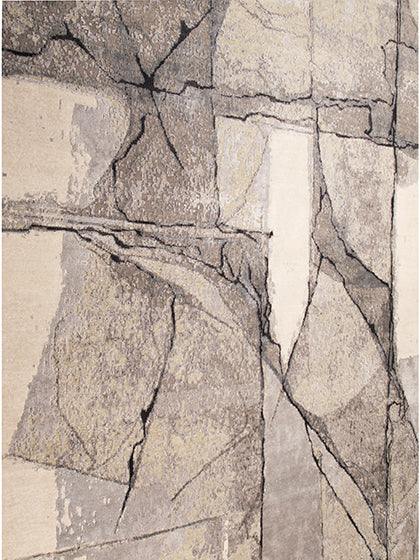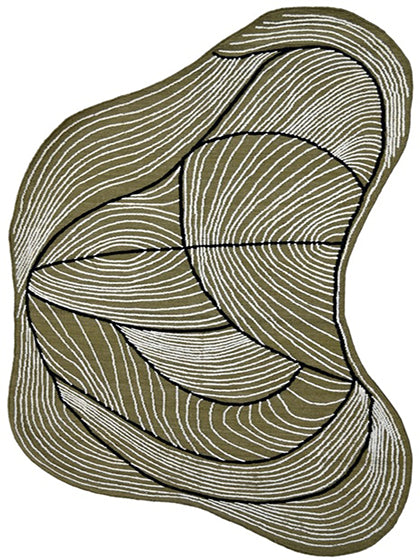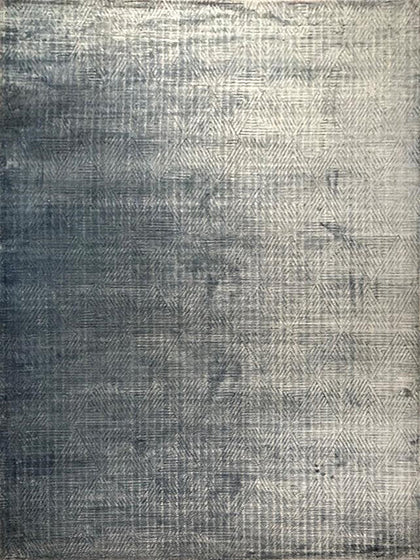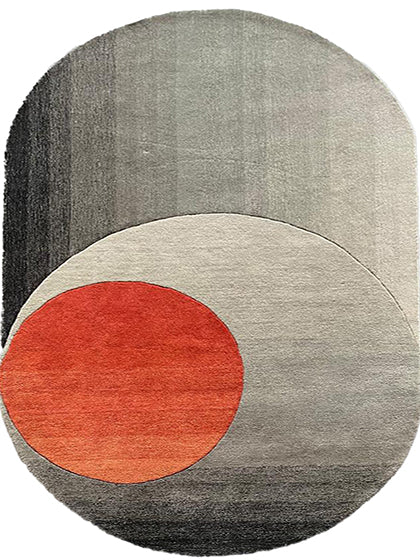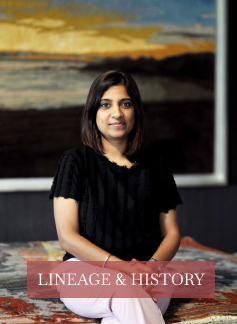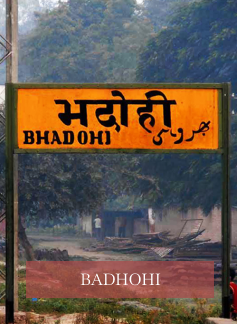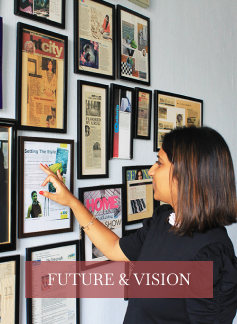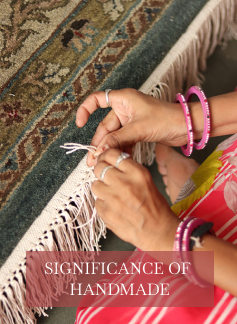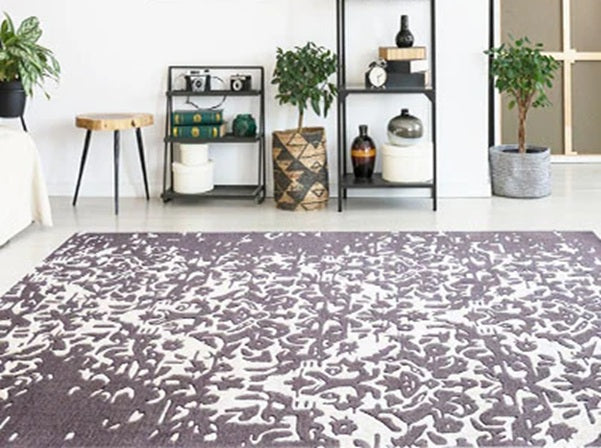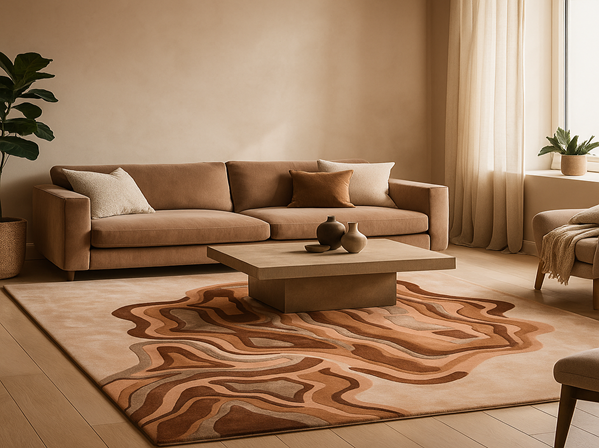In the world of luxury handmade carpets, abstract rugs have emerged as a preferred choice for both interior designers and discerning clients alike. At Carpet Couture by Rashi, we often see our bespoke hand-knotted and hand-tufted creations in abstract expressions take centre‐stage in projects. But why is that the case? Let’s explore the deeper reasons behind the appeal of abstract rugs, the psychology behind them, and how you can utilise them to elevate a space.
1. They Act Like Art — Underfoot
Abstract rugs offer something beyond the functional: they bring artistry into the floor plane. Unlike traditional medallion rugs or repetitive motifs, abstract rugs are less about replicating historical patterns and more about expression, movement and visual intrigue. As one blog puts it: “Abstract rugs serve as more than just floor coverings — they’re conversation starters, artistic focal points and design anchors that tie entire rooms together.”
For designers, this is a major benefit: when you place an abstract rug in a space, you’re adding a piece of art — not just a surface treatment. It becomes the groundwork of the room’s aesthetic story, the visual anchor around which furnishings, lighting and accessories revolve.
2. Versatility Across Styles & Layouts
One of the biggest reasons designers lean into abstract rugs is their remarkable design adaptability. Because abstract patterns do not carry a specific cultural motif or rigid symmetry, they can integrate with a wide variety of interiors — from minimalist Scandinavian or Japandi to warm boho-luxury, to corporate hospitality zones.
Specifically:
-
In modern homes with clean lines and neutral colour palettes, an abstract rug adds texture and interest without overwhelming.
-
In more traditional homes, an abstract rug can modernise and refresh by bridging classic furniture with contemporary colour or shape.
-
In open-plan spaces, abstract rugs can define zones without the visual rigidity of strong borders or repetitive motifs.
For your brand, this means customisation in size/shape/colour makes abstract rugs a powerful offering: whether it’s a shaped rug in a boutique hotel lobby, a large-format living room piece or an accent rug in a luxury home.
3. Psychological Appeal: Pattern, Colour & Human Perception
What is it about abstract patterns specifically that appeals to human beings? Several underlying psychological and perceptual factors help explain:
a) Colour & Emotion
Colour psychology tells us that colours influence mood and behaviour — for example, warm hues (reds/oranges/yellows) evoke energy and sociability, cool hues (blues/greens) tend toward calm and focus. Abstract rugs allow designers to experiment with these palettes without being tied to recognisable imagery.
b) Movement & Visual Flow
Abstract designs often feature free-flowing shapes, lines, gradients, and irregular forms. This creates visual movement: the eye moves, the mind interprets, the space feels dynamic. One article explains: “Abstract rugs bring energy into a room. Their unpredictable patterns can spark conversation, inspire creativity and make even a neutral space feel alive.”
c) Preference for “Ordered Complexity”
Research in design and perception (for example, by Nikos Salingaros) shows that human beings prefer environments with structured variation rather than monotonous repetition. In rugs: traditional repetitive patterns may risk visual fatigue or feel static; abstract designs, when well-designed, strike a balance of complexity and coherence.
d) Personal Interpretation & Emotional Connection
Abstract patterns invite personal interpretation. Unlike a rug that clearly depicts a medallion or floral motif, an abstract rug leaves space for imagination. “One person might see flowing water in the swirling pattern, another sees dancing flames or rolling clouds.” That openness creates emotional resonance, uniqueness and conversation value — exactly what both designers and clients appreciate.
4. Practical & Spatial Benefits
Beyond aesthetics and psychology, abstract rugs also offer practical benefits that make them designer-friendly and client-friendly:
-
Hiding wear & visual irregularities: Abstract patterns with layered colour and variation can better camouflage high traffic, light spills, or fade over time.
-
Flexible sizing / shapes / placements: As one article notes, “Odd-shaped rugs fill voids, solve spatial issues and connect furniture.” For a brand like Carpet Couture by Rashi, this means you can offer shaped rugs or oversized formats customised for that spatial challenge.
-
Anchor for mixed materials: In mixed interiors (wood + glass + metal + textiles), an abstract rug can unify multi-materials through colour and texture rather than competing with them.
5. The Investment & Trend Factor
Abstract rugs are not just trend pieces — they move with evolving design tastes while providing long-term relevance. Industry blogs list bold abstract as a key rug trend for 2025 and beyond.
From a brand-perspective, offering high-quality handmade abstract rugs can position you as forward-thinking, design-savvy and catering to premium markets (residential + hospitality).
6. How to Choose the Right Abstract Rug for Your Space
For designers and clients working together (or for someone like Carpet Couture by Rashi guiding them), here are some quick guidelines:
-
Consider scale: Large rugs with generous abstract patterns anchor furniture groups; smaller rugs can be used as accents or layering pieces.
-
Colour strategy: Match undertones to your existing palette, but don’t fear introducing a contrasting accent colour — abstract designs allow boldness.
-
Material & texture: For luxury, look at hand-knotted wool, bamboo silk, or mixed high-low pile for depth and sheen (which your brand specialises in).
-
Shape & placement: A shaped or oversized abstract rug can solve unusual room shapes or become a design highlight in hotel lobbies, living rooms, etc.
-
Lifestyle & function: For high-traffic areas choose durable fibres; for statements in lower-traffic zones go for luxury fibres and pile.
-
Storytelling: Because your brand emphasises customisation, emphasise the story behind the abstract design — the inspiration (e.g., geological layers, light reflections, cloud-drift) — to enhance emotional connection.
Conclusion: Abstract Rugs as Dialogue, Design and Delight
At Carpet Couture by Rashi, we believe each rug is more than floor-furnishing — it’s an expressive element in the living ecosystem of the space. Abstract rugs embody this belief beautifully: they allow form to follow emotion, colour to create mood, and pattern to invite interpretation.
When designers and clients choose an abstract rug, they are choosing freedom, expression, versatility and lasting visual impact. Because human beings are drawn to movement, colour, complexity within coherence, and environments that feel alive yet curated — abstract rugs deliver that.
If you’re exploring your next handmade luxury carpet, consider letting an abstract design lead your story. At Carpet Couture by Rashi, we’d love to work with you to create a piece that is truly unique, truly expressive — and truly yours.

